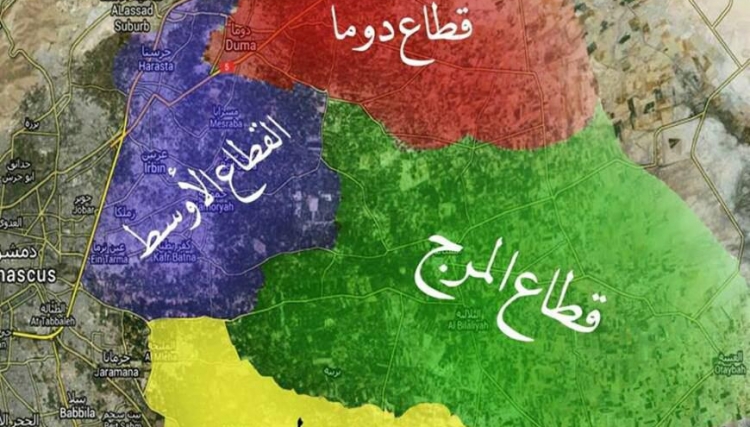Baladi News – Damascus (Mayar Haydar)
Several opposition activists from the besieged eastern Ghouta in Damascus countryside launched a hashtag titled (al-Marj is Burning in Silence) to shed light on the fierce campaign by the regime forces, as well as their supporting sectarian militias, against al-Marj area. Being carried out using missiles, barrel bombs and different types of shells, the campaign comes under a strange media blackout. This blackout drove the activists, who marked the sector with the green color, to draw attention to the area that is considered the breadbasket for Damascus eastern countryside.
In a private interview with Baladi-News, media activist, Muhammed Abu al-Baraa, said, “We launched (al-Marj is Burning in Silence) hashtag for the sake of this very vital sector, where thousands of acres of wheat crops were burned and farms were subject to all types of bombardments and sabotage. Eighty percent of this area, which is considered the safety valve of dozens of besieged towns, was destroyed, let alone excluding it from the UN agreement of entering aid to residents, which makes the area a disaster zone by all international standards. That is why we had to announce that al-Marj is burning.”
Media activits, Suhaib, from Deir al-Asafir in the eastern Ghouta, said that “a campaign of the forces of the Syrian regime as well as Iranian, Iraqi, and Lebanese militias, had been launched late in 2015 under cover of Russian war planes. The fierce shelling had enabled the attacking forces to gain control over the towns of Nola, Housh al-Admal, Marj al-Sultan, Harasta, Bzina, al-Bilaliyya, Deir Salman, and the environs of al-Nashabiyya. Then, they sought to take the strategic hill of “Tal Firzat”, which looks over the majority of the eastern Ghouta towns, but the rebels could deter the attacking forces that sought revenge on the civilians in the nearby villages.
The speaker added that “after that tripartite aggression by the Syrian regime, Russia and Iran, a more violent campaign started last week to storm the village as well as the strategic hill of al Bahhariyya, which looks over vast wheat farms in the eastern Ghouta. At the end, the regime attack paid off as its forces could capture the two areas on the 21st of June.”
Suhaib concluded, “For fear of losing one of the most important sectors an to avoid the shrinkage of the eastern Ghouta, we sought to reignite the determination of the opposition armed factions inside and outside the Ghouta by launching (al-Marj is Burning) hashtag.”

